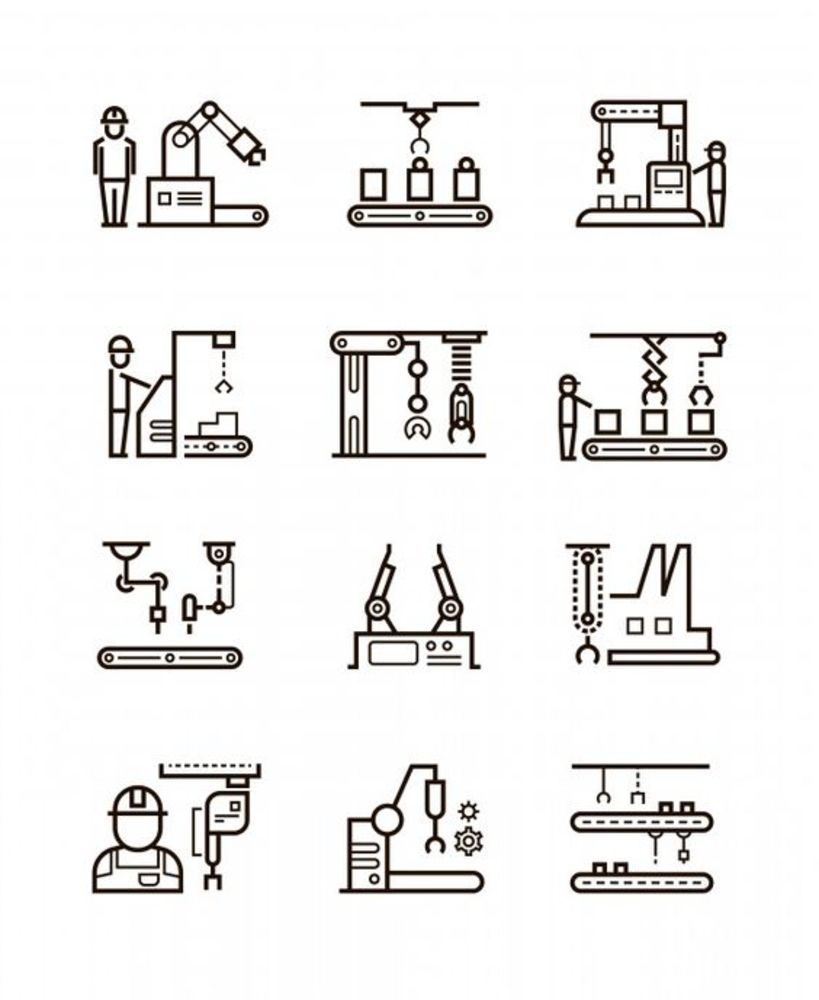This article is part of a blog series on Robots, exploring what robots are and what they can do for the construction industry.
Robotics is everywhere and is used in various applications.
Construction robots are used to perform repetitive and mundane tasks to:

Developing urbanization worldwide contributes to an indisputable prospect for the growth of this market segment, in the construction industry.
Here are some examples of innovative robots that have been developed in the recent past:
Washington State University
The University in collaboration with the Trimble Technology lab is developing a program - the "Cougar Cage" fund - that matches private donors with worthwhile projects pitched by students, faculty, and staff:
Nestor Perez-Arancibia is developing bee-sized robots by creating a hybrid battery that uses both electricity and liquid fuel. He plans to develop a swarm of robotic insects, with 50 of them able to crawl and the other 50 able to fly.
Vahid Vahdat and Maryam Mansoori, professors of design and construction are developing robotic additive manufacturing to allow students to research and experiment with advanced 3D printing. Robots, artificial intelligence, and automation will change the way architecture works. Vahdat and Mansoori want their students to be prepared to enter a workforce focused on safe and sustainable ways of building.
Fastbrick Robotics
This company is constructing eight houses in Western Australia, by using its Hadrian X robot which works fast and accurately.
Advanced Robotics Construction
This Australian company (ACR) developed TyBOT and IronBOT to carry out the repetitive and backbreaking tasks of rebar installation using artificial intelligence and robot vision. The robots are working consistently and predictably, much quicker than the traditional methods.
ACR will provide its robotic services for the highway project in Florida for $598 million. By late 2022, the project will connect US 19 to I-275 and the Bayside Bridge to I-275 in Pinellas county. It will give drivers a tolled option to commute several miles up and over dozens of traffic signals.
The University of Tokyo
Students are developing autonomous robots for construction sites monitored by tablet or smartphone. Operating such robots is safe and will reduce accidents.
Canvas and partners
A finishing robot for drywall has been unveiled by construction robotics. Canvas and its joint venture with six of the top contractors in the sector support the company’s mission to “build in bold new ways by placing better tools in the hands of competent people.”
You can make drywall finishing safer by using robots, it will be more appealing to your workforce. It delivers:
The driving factors of the robot construction market are:
The high initial investment of purchasing and maintaining robots should be mentioned, as it can deter a lot of companies to enter the market.
The market is divided into segments:
Based on Products
Based on Application
Robots are used, in the construction industry to reduce repetitive and mundane tasks in a controlled environment, to automate, and streamline your processes making them more accurate.
On a regional basis, the construction robots market is divided into major regions: North America, Europe, Asia Pacific, Latin America, Middle East, and Africa.
The North American region is foreseen to grow at great speed due to technological developments.
The Asia-Pacific region represents a big part of the forecasted worldwide market thanks to the adoption of automated equipment in construction activities and economics.
Robotic manufacturing companies are growing significantly in China, boosting the growth of the construction robots market.
Japan has employed construction robots on construction sites for a long time and is developing automation to overcome the labor shortage crisis.
The Europe region will grow thanks to the rules and regulations of the industry by the governments as well as the spread of non-residential and residential construction projects.
During the lockdown period of Covid-19 robotic equipment manufacturing as well as the construction business came to a halt. It is considered a small blip in the construction robots market in the forecast period.
Technological advancements such as aerial robotics, bricklaying robotics, and demolition robots will be the main engines of the market expansion.

To make sure that the robot market remains competitive and will meet the future requirements of the construction industry, it is important to establish automated and robotized construction systems today. This includes an industrialized process in the following subsections of the market:
Companies like MIT and Construction Robotics are launching automated robots designed to solve two issues:
The MULE (Material Unit Lift Enhancer) is a piece of machinery that improves safety and efficiency on construction sites by diminishing the weight carried by masons and doubling or tripling the daily work of individual workers by:
The purchasing cost of $60,000 is very high for most construction companies but the ROI will be rewarding.
SAM100 is a robot designed to lay between 2,000-3,000 bricks a day with little human supervision whilst the mason team focus on smoothing mortar and guiding the robot on the brick line.
Construction Robotics claims that by using SAM100 you can take more projects on board as you:
The robot’s price tag is $500,000 so most construction companies cannot afford that investment but you can rent the machine at a cost of roughly $20,000 a month using 3 times less labor
The Autosaw unit consists of OnShape’s CAD system. A modified Roomba Create equipped with a jigsaw as well as versatile Kuka youBots which mobilize the carpentry process. A computer design system sends motion-tracking commands to MIT’s robotic crew, allowing the youBots to carry and position the wood which the AutoSaw then cuts with precision, preventing injury on job sites by taking on dangerous work while other carpenters focus on logistics.
AutoSaw uses computer numerical control (CNC) technology. CNC converts designs into numbers that are then fed to specially programmed tools to execute. With AutoSaw, you can create your own templates from the CAD software and adjust them to produce the size and shape that is required in the BIM Execution Plan.

We would need a crystal ball to predict what will happen 20 years from now, especially if we look back to twenty years ago when automation and digitalization were in their infancy. But we can be sure that there will be the proliferation of many types of robots from general mobility platforms to single-task robots.
We expect that with the development of the 5G and future networks we will see various types of robots being connected to perform a multitude of tasks like drilling, painting, and bricklaying. The robots will be specific to certain tasks or functions and will be able to network together to increase the productivity and quality of the constructions by:
We envisage that mobile robots will extend automation to replace tasks performed by humans in:
You may think that robots will replace humans and that this is bad for employment, but we believe that new skills will be developed such as:
We are not convinced that technology will be the number one driver in the development of smart cities. Architectural styles and aesthetics will play the driver role. Robots will be developed to help build smarter cities by streamlining design processes.
Robots will improve the comfort and health of construction users by making sure they work properly.
For COVID, for example, robots were used to provide people with air filtration and thermal comfort and optimize energy consumption.
What we've learned in the past from modern commercial construction techniques should be applied to:
For example, the high-rise development around Barclays Center in Brooklyn is similar to any other tower in New York, but the construction was more efficient.
Robots will not change aesthetics and form, this is the role of Artificial Intelligence, but they improve the built environment for users' comfort.

Technological advancements in the architecture, engineering, construction, and facilities management industry allow digitalization and automation.
Traditional and modern robotic technology concepts will drive the success of construction robot implementation in association with other technologies like:
We will discover better, more cost-effective applications that will significantly change the construction industry. To maximize and influence the future of construction automation and robotics, we have to learn how to manage the human-robot interaction and the conflicts between:
At Driving Vision, we believe that the future of robotics in the construction industry is brilliant and will completely revolutionize the traditional way of operating. We can help you to decide if you need to invest in technology. Our technology diagnostic looks at the best way to incorporate new technology into your workflows and how to move your organization to cloud computing so you can open up new possibilities for your daily planning tasks and make sure your data never leaves the optimally secured data center.
The technology appraisal report will help you to explore what investment is required to improve your projects’ productivity and collaboration as well as the ROI you can expect.
A Driving Vision expert will conduct the interviews online and will issue a report and discuss our findings with you. Together we will decide the best way to implement the solutions at your pace and according to your budget
Implementing BIM can be daunting, but Driving Vision is here to help you at the pace you are comfortable with. Get started by getting in touch now
Seamless Data Transfer
Enhances collaboration between team members
Allows you to build green constructible assets on budget and on time
